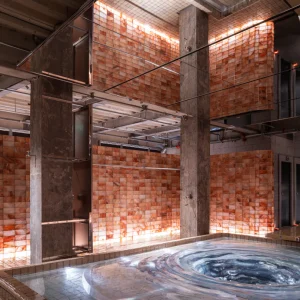However for those in stable employment not greatly affected by the economic conditions, disposable income is rising fast taking into account falling prices and in particular low rates of interest on mortgages and other household debt. For those on fixed interest trackers we hear that monthly payments on an average £150K mortgage, has put £300 to £500 back into their purse. This new wealth can be used now to fund improvements to the existing property and provide much better accommodation thereby putting off moving or making the property more saleable.
Few would argue that the street presentation of the house is the biggest selling feature and nothing adds more to this than well designed, good quality windows and doors. Good looking fenestration, even on its own, can easily sway potential buyers from the very first glance; if you do not have this wow factor and you are in the fortunate position of having the extra spending power, now is the time to act.
Most people have a poor perception of timber windows based on a bad reputation gained from the 60’s and 70’s building booms. Then, softwood window frames were used in a primed state by house builders as formers for the bricklayer to build the external walls around. As a result, the windows suffered and the subsequent paint applied hid the damage already caused mainly by ingress of moisture from the building process. This lead to the timber frames rotting and hence the bad reputation. What followed was a growing demand for improvements and these came mainly in plastic PVC replacements.
New windows and doors will really turn your house into something to admire and desire. The availability of these products has never been more glaringly obvious as we are constantly being bombarded with promotional literature, television and radio advertising mostly to sell us the benefits of double glazing with energy saving features. Little or no thought is given to the frame materials used to support the glass.
The growth in the use of first, aluminium in the 1970’s, and subsequent to this reinforced plastic, has been phenomenal and up until very recently has almost relegated timber to the archives and distant memory.
However, things have certainly changed and timber is now becoming the first choice for the frame material to support the glazing now used in fenestration products. Whilst this is largely driven by the very real “green” credentials that timber offers it is also due to the massive improvements in product design and quality, made by the timber windows and doors manufacturing industry.
Premium quality timber windows and doors are now built using engineered timber components made of clean laminated and finger jointed sections. These are produced at the source, in or near the saw mill and forests which are recognised as being sustainable. Third party certification schemes operate to guarantee this. Primary sawmilling waste and moisture are now recycled at the forest source and used in other products such as paper pulp, indigenous fuel and farm products. This means that only clean knot free, stable components are used in the manufacture of the windows and doors and are finished using environmentally friendly long life paint finishes, giving maintenance costs favourable to other frame materials.
For housing the goal has been set by the Government under The Code for Sustainable Homes (CSH) that by 2016 all new housing being built will be Zero Carbon. This means that any energy consumed in the process and the ongoing running must be offset by carbon gains and renewable energy resources. Whether this will be achieved is now doubtful given the current difficulties the housing market is in, but for the average person the knowledge as to how to achieve some of the energy reducing initiatives must be desirable.
Timber windows and doors come double glazed as standard and you can have exactly the same energy saving features offered by other competing materials. Energy saving ratings as issued by the British Fenestration Ratings Council (BFRC), are applied to the products and offer differing levels of performance that comply with the requirements of CSH. Most modern timber windows available today will comply with those requirements. The aim of the CSH is to present points in nine different areas based on the design specification of the house. The more points you get, the closer it gets to Zero Carbon.
A recent survey carried out by Davis Langdon showed in a Life Cost analysis over 60 years that timber had a NEGATIVE impact on carbon when used as the material for windows and doors in house building.
At the same time the Building Research Establishment (BRE) has produced the Green Guide which is recognised on a wide basis and rates products with what’s called ECO points. These are used against the Code for Sustainable Homes in order to meet the criteria for carbon footprint. In the Green Guide timber windows made by the PWG are rated A+ and gain maximum ECO credits in the CHS equal to level six.
So this means that timber windows and doors which are made from the earth’s only renewable natural material can provide your required light and energy efficiency requirements for the future and meet the drive for Zero Carbon.
But it’s not just the performance of the products that win the day when choosing the material for your frames, look what timber can do for the aesthetics of your house. Fine joinery joints and sections were used traditionally in the period houses that still stand today and are what most people aspire to own so when it comes to replicating these features timber, as always, is the answer.
Timber is natural, warm to the touch; double glazing is standard and can be maintained just like other materials. It seems to be the material for today and for the future, not only helping to control and reduce energy costs but encouraging the planting of more farmed trees and considerably adding to the value of a property.
Most reputable timber window and door manufacturers have third party and independent accreditation schemes like the Timber Window Accreditation Scheme (TWA) run by the British Woodworking Federation (BWF). These schemes offer long warranties on the products and ancillary items.
Mumford & Wood and Clearwood UK, members of The Performance Window Group, can offer a very wide range of the highest quality timber window and door products, whether it’s for conservation and heritage projects, or today’s modern contemporary architecture. Products made by these companies comply with the scheme rules of the BWF-TWA Scheme with a lead time of as little as four weeks. www.timberwindows.com, PWG’s latest acquisition, has over 120 accredited and approved installers throughout the UK.





